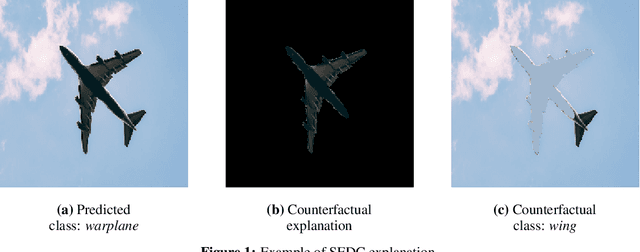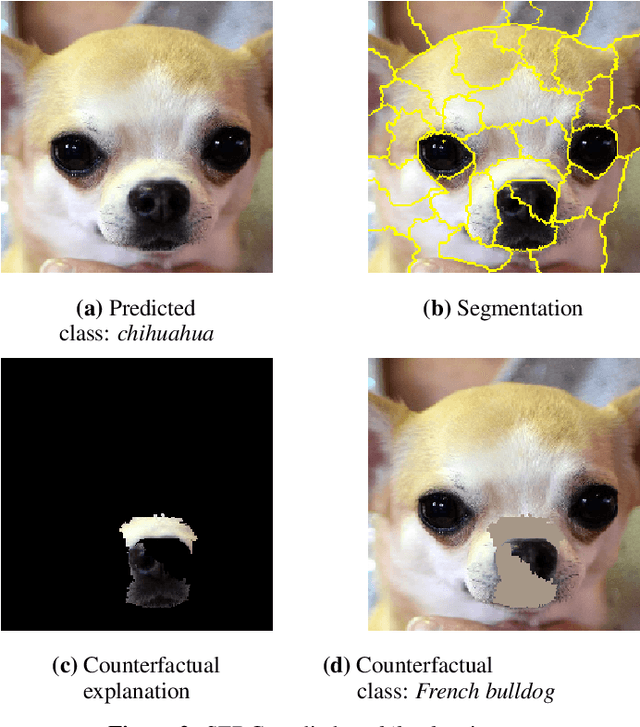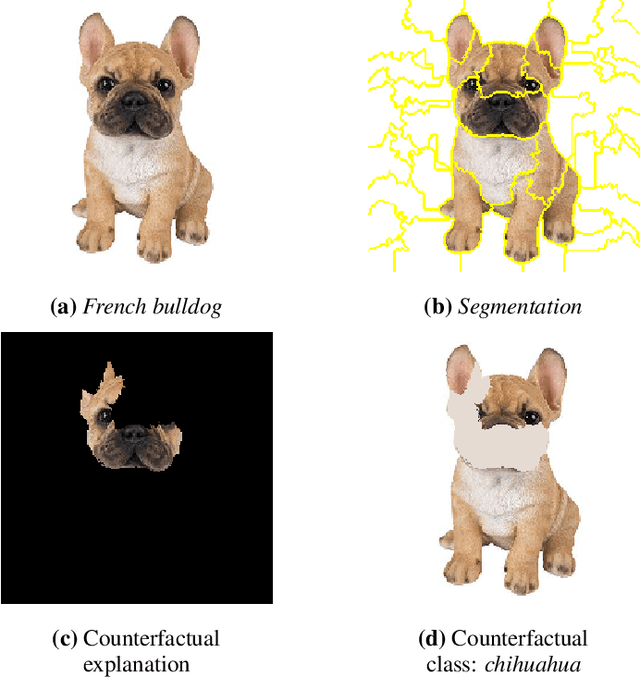Explainable Image Classification with Evidence Counterfactual
Paper and Code
Apr 16, 2020



The complexity of state-of-the-art modeling techniques for image classification impedes the ability to explain model predictions in an interpretable way. Existing explanation methods generally create importance rankings in terms of pixels or pixel groups. However, the resulting explanations lack an optimal size, do not consider feature dependence and are only related to one class. Counterfactual explanation methods are considered promising to explain complex model decisions, since they are associated with a high degree of human interpretability. In this paper, SEDC is introduced as a model-agnostic instance-level explanation method for image classification to obtain visual counterfactual explanations. For a given image, SEDC searches a small set of segments that, in case of removal, alters the classification. As image classification tasks are typically multiclass problems, SEDC-T is proposed as an alternative method that allows specifying a target counterfactual class. We compare SEDC(-T) with popular feature importance methods such as LRP, LIME and SHAP, and we describe how the mentioned importance ranking issues are addressed. Moreover, concrete examples and experiments illustrate the potential of our approach (1) to obtain trust and insight, and (2) to obtain input for model improvement by explaining misclassifications.
 Add to Chrome
Add to Chrome Add to Firefox
Add to Firefox Add to Edge
Add to Edge